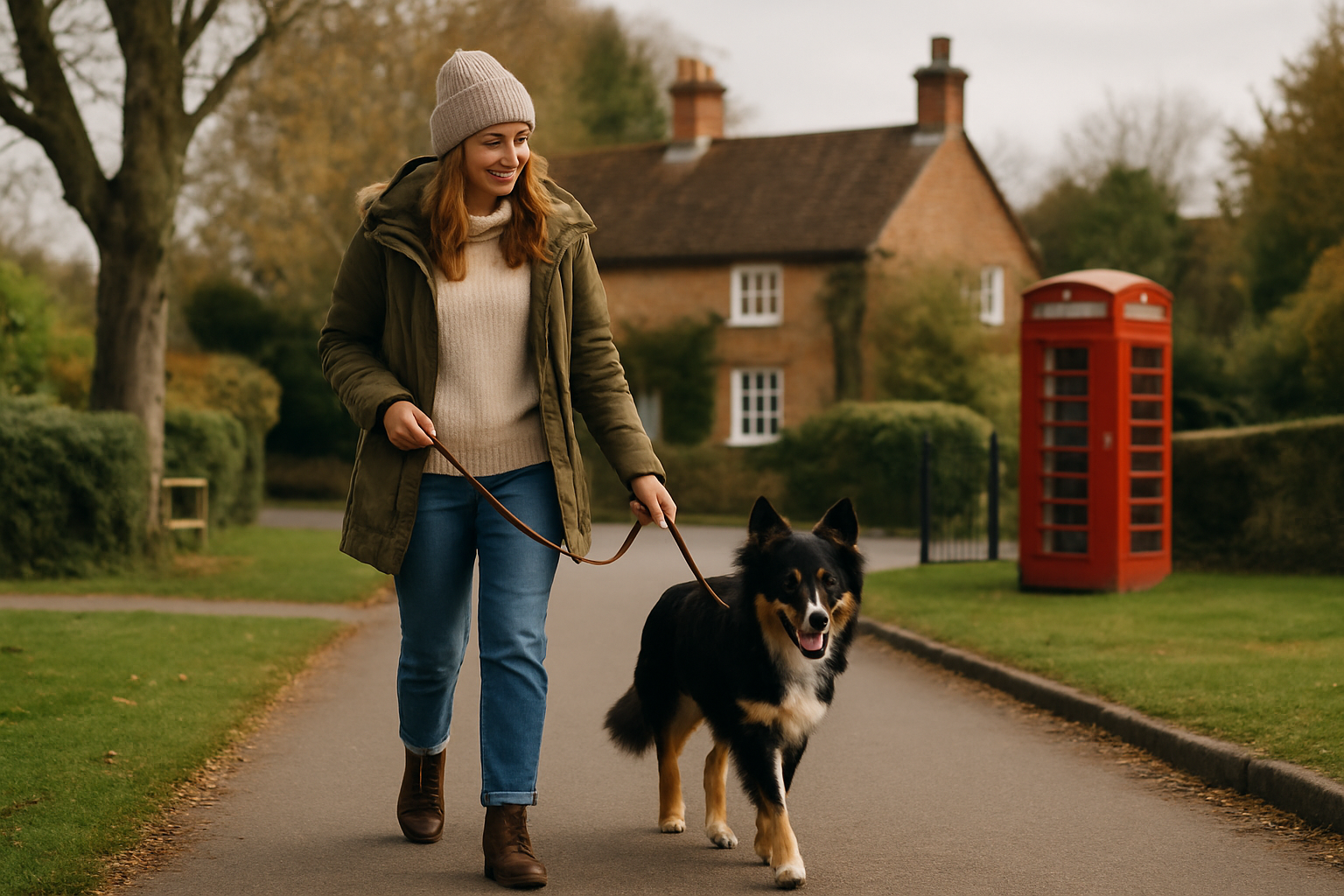Your basket is currently empty!

Calm Confidence: Essential Guide For Happier UK Dog Walks
Finding Your Feet Together
calming a reactive dog can feel daunting, but you are not alone. On busy British pavements, scooters whizz past, bins clatter, and someone always seems to appear round a corner at the worst moment. At PawsGuide, we break calming a reactive dog into small, kind steps that fit real life, so you and your dog can breathe again. Think progress, not perfection, and let’s rebuild calm together. 🐾
Why Your Dog Reacts
Barking, lunging, or freezing often comes from fear, frustration, or simple overwhelm. Your dog is not being naughty, they are coping the only way they know. Understanding is the first step in calming a reactive dog. Check health first, as pain or discomfort can lower tolerance. Then think of a stress bucket. Poor sleep, too little downtime, or too many surprises fill the bucket, and a small nudge can tip it. Shorter walks, more sniffing, and quiet rest help empty it. Keep notes on triggers, time of day, and distance, so you can spot patterns and make kinder choices.
Small Wins: calming a reactive dog at Home
Home is your training base. When you think about calming a reactive dog, start where stress is lowest. Create a cosy zone with a comfy bed, chews, and water. Use frosted window film if street views set your dog off, and pop on gentle sounds during delivery hours. Add calm brain work, like scatter feeding in the garden, snuffle mats, and simple scent games. A few minutes of sniffing can relax the whole body. Keep routines predictable, and give your dog choice, for example, invite to train rather than insist. Small wins at home make outside practice easier.
Street Smarts With Kindness
Out on pavements, calming a reactive dog starts with distance and choice. Find a spot where your dog can notice a trigger and still take a treat. That is your safe distance. Try the Look At That game: when your dog glances at the trigger, softly mark it with a yes, then feed. They learn that seeing the thing predicts good stuff, which changes the feeling. Build in easy U-turns, treat scatters on grass, and a calm body block when something arrives too fast. Choose wider paths, residential cut-throughs, and earlier or later walk times. Success first, then gradually reduce distance when your dog is ready.
Your Calm Toolkit
Comfort helps confidence. A well fitted Y-harness, a two-metre lead, and a treat pouch keep hands free and movement steady. In safe spaces, a long line gives room to sniff without losing control. Carry pea sized food your dog loves, or a favourite tug if that suits them better. Add a lightweight mat for settle breaks. Tools that support calming a reactive dog do not fix feelings on their own, yet they make each choice safer and easier. Plan routes with green bits, pause for decompression sniffs, and end with something your dog finds joyful, like a gentle garden explore.
Mindset Matters
Progress with calming a reactive dog is not a straight line. Some days you will float home, other days you will need a reset. That is normal. Celebrate tiny wins, such as one quiet glance or a quicker recovery. Keep a simple diary to see gains you might otherwise miss. If a wobble happens, step back to easier setups, add rest, and try again tomorrow. Be kind to yourself too, because your calm helps your dog’s calm. If you want a second pair of eyes, a qualified UK trainer or behaviourist can tailor a plan that feels doable for your life.
If you need extra support or additional resources, visit our Useful Links page for further guidance.
